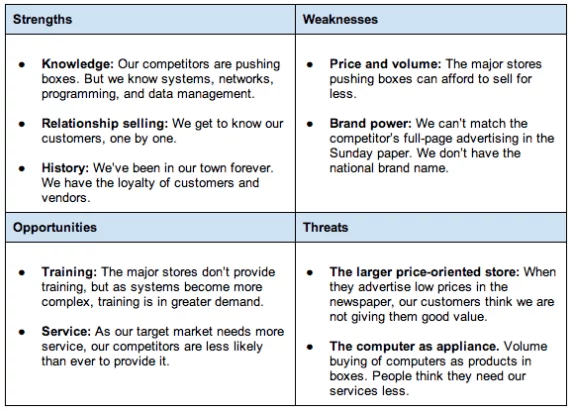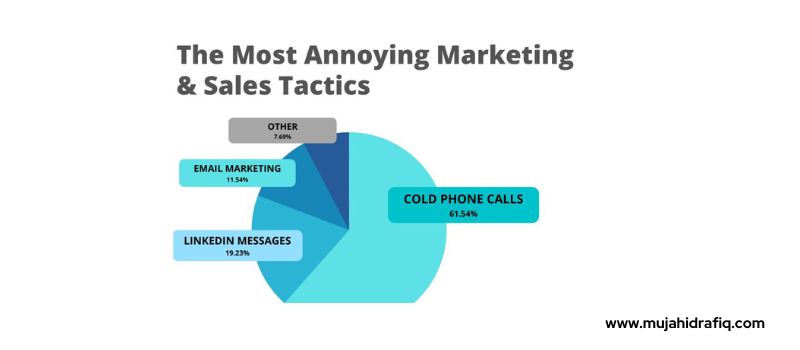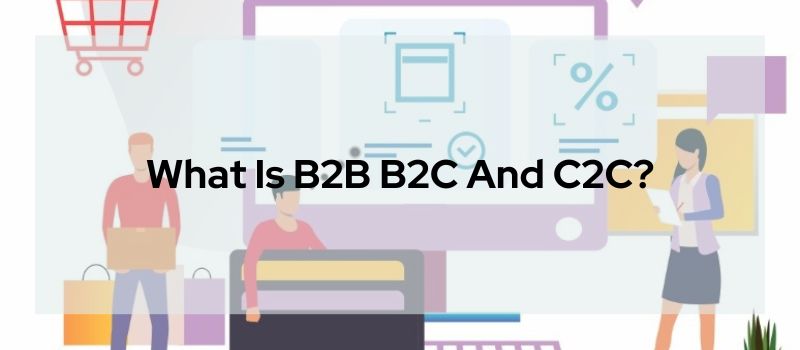In marketing and sales tactics, to reach your dream buyers, you need a mix of skills and tactics that work together in a dynamic way. It’s not just about promoting goods or services; it’s about mastering the art of communication and engagement in the digital age. Your way through the vast world of customer interaction is guided by your command of the natural language you usually use to attract clients and your understanding of context.
Contents
- 1 Marketing and Sales Tactics to Reach Your Dream Buyers
- 2 Elements to Increase Conversion Rates
- 3 Understanding Your Ideal Customer
- 4 Crafting Your Marketing and Sales Strategy
- 5 Turning Your Dream Buyers into Customers
- 6 How to Avoid most annoying marketing and sales tactics
- 7 FAQs
- 7.1 Q1: Where does your dream buyer hang out and congregate?
- 7.2 Q2:Where does your dream buyer get their information?
- 7.3 Q3: What are their biggest frustrations and challenges?
- 7.4 Q4: What are their hopes, dreams, and desires?
- 7.5 Q5: What are their biggest fears?
- 7.6 Q6: What is their preferred form of communication?
- 7.7 Q7: What phrases, language, and vernacular do they use?
- 7.8 Q8: What does a day in your dream buyer’s life look like?
- 7.9 Q9: What makes them happy?
- 8 Conclusion
Marketing and Sales Tactics to Reach Your Dream Buyers
It’s important to master natural words and understand the context in which your buyer understands them. Customise your answers with empathy to reach your dream buyers. Make different ways to get people involved, and add humour and a human touch to make bonds that last for decades. Finally, use questions to make sure you understand what’s needed, keep exchanges flowing, and talk in plain English.
Elements to Increase Conversion Rates

Understanding Your Ideal Customer
Researching Where Your Dream Buyer Spends Time
It is important to identify where your dream buyers spend their time, both online and offline. Monitoring the social media platforms, publications, and forums where your niche hangs out provides insights into their interests and communities. You should research the channels and media where they get their information to understand their habits.
To truly understand your target audience, you need to identify the social media platforms, publications, forums and communities where your niche congregates. Monitor popular sites in your industry to gain insights into your dream buyers’ interests, conversations and influencers.
For example, if you sell accounting software, join and listen in on Reddit and Facebook groups for accounting professionals. If you have an e-commerce store targeting new moms, follow parenting hashtags on Instagram and Twitter.
Research takes work, but it pays off. The more you can dig into the digital footprint of your ideal audience, the better you can meet them where they already exist online.
Understanding Your Dream Buyer’s Motivations
Digging into what motivates your audience is key. Identify their biggest hopes and desires related to your industry as well as the fears and frustrations that hold them back. Understanding both the aspirations and pain points of your dream buyers allows you to appeal to their emotions in your messaging.
Steps you should follow to understand buyer’s motives are following
- Conduct in-depth buyer persona research to uncover your target audience’s hopes, dreams, and aspirations. What outcomes or states of being are they looking to achieve?
- Dig into the problems and pain points your prospects experience. What frustrations or unmet needs would they pay to solve? Where are they struggling?
- Analyze customer review sites to identify recurring complaints, desires, and emotions. This provides insight into motivations.
- Survey existing customers directly about why they bought from you, what delights them, and what problems they faced that you solved.
- Monitor social media conversations in your industry for clues about what prospects care about and the language they use to express it.
- Speak directly to customers via focus groups or interviews to discover beliefs, attitudes, and drivers in their own words.
- Study the copy and messaging used by competitors and thought leaders. What messaging seems to resonate in your industry?
- Examine the emotional appeals used in other marketing campaigns targeting your buyer demographic. What makes them compelled to take action?
- Test different messaging angles with small campaigns to see what elicits the strongest response and engagement from your dream buyers.
- Keep researching over time as motivations can evolve. Continual insights help you craft ever more compelling messaging that powerfully resonates with your ideal audience on an emotional level.
Learning Your Dream Buyer’s Communication Style
You need to learn exactly how your audience likes to be communicated with. What words and phrases resonate most with them? Do they prefer email, social media, video, or other channels? Customizing your communication style and channels to match your dream buyer’s preferences makes a difference.
To connect with prospects, you need to speak their language – both literally and figuratively. Take time to research how your audience likes to receive information and be communicated with. Analyze the content they already engage with for clues. Do viral posts in your industry tend to be short videos or long blog articles? What tone of voice and terminology seems most effective?
Monitor social conversations as well. Pay attention to the words and phrases your audience uses when talking about your industry. Listen to the questions they ask. This helps you mirror natural language. Factor in demographic considerations too.
For example, Baby Boomers still rely more on TV and direct mail vs. Gen Z’s immersion in social media. Tailor accordingly.
Crafting Your Marketing and Sales Strategy

Developing Tailored Messaging and Offers
Craft messaging and offers that speak directly to your dream buyer. Ensure the language resonates with their motivations and addresses their pain points. Demonstrate you understand their problems and provide solutions to build trust.
Factors that affect marketing sales and strategies are following
- Use the language and terminology your audience uses. Mirror their vocabulary when describing your products or services.
- Highlight the specific outcomes, results and benefits your offering provides, like more money, free time, confidence, etc.
- Focus on alleviating pain points and frustrations prospects face. Demonstrate how you understand their problems.
- Tap into your target audience’s aspirations and dreams that your offering can help fulfill or get them closer to.
- Use a relatable tone and real-world examples they can identify with when explaining how you can help them.
- Personalize messaging where possible using segmentation data like demographics, behavior, interests.
- Test different angles like convenience, status, cost savings. See what resonates most with metrics like open and click through rates.
- Make offers irresistible with discounts, bonuses, free gifts, or limited-time access conveying urgency.
- Feature customer success stories and testimonials that buyers can relate to. This builds credibility.
- Guarantees, return policies and satisfaction promises reduce perceived risk in buying.
- Compare to competitors on factors like quality, experience and results when appropriate.
- Provide a clear next step like scheduling a call or signing up for a free trial to drive conversions.
Choosing the Right Platforms and Channels
Determine which marketing channels and platforms your target audience actually uses. Meet them where they already are online. Ensure your website is optimized for conversions and SEO. Use their preferred social media platforms.
Guide for choosing platforms
- Research where your audience is most active online—social media sites, blogs, forums, etc.
- Identify niche publications and influencers your buyers trust for partnership opportunities.
- Ensure your website is optimized for organic search and conversions based on buyer keywords.
- Promote on social platforms your audience uses like Facebook, Instagram, LinkedIn, or TikTok.
- Use paid ads to find and engage your audience across channels like social, Google, Amazon.
- Analyze data to see which platforms and channels drive the most relevant traffic, leads, and sales.
Creating an Ongoing Nurturing System
Install a system to continually attract, educate, and nurture prospects. Use email sequences, retargeting ads, and loyalty programs. Guide prospects down the path to becoming customers.
Steps you should follow to nurture system
- Install automation to deliver email sequences and messaging when triggers are met.
- Continually provide value through social content, blog posts, guides, webinars and more.
- Use retargeting and social ads to draw past site visitors back.
- Develop loyalty programs with tiered rewards to incentivize repeat purchases.
- Send educational content and offers related to previously purchased or viewed items.
- Request reviews to generate social proof and testimonials for new buyers.
Turning Your Dream Buyers into Customers

Guiding Prospects Down the Sales Funnel
Attract prospects with free educational content that addresses needs. Offer consultations to discuss their situation. Provide pricing and purchase options when they are ready.
Guide them through your funnel.
- Attract with top-funnel content addressing pains, problems and questions.
- Convert interest to leads with gated offers like resources, webinars, coupons.
- Nurture leads by providing value and building relationship over time.
- Transition known, warm leads to middle-funnel content like demos or pricing.
- Offer limited-time promotions or free trials to encourage bottom-funnel conversion.
- Deliver exceptional post-purchase experience to foster loyalty and retention.
Crafting Compelling Calls-to-Action
Calls-to-action should convey urgency, social proof, and guarantees to compel action. Clearly communicate the value prospects will receive to make your offer irresistible.
Examples include the following:
- Use urgent language like “Limited Time Only!” or “Sale Ends Soon!” to create urgency and scarcity.
- Specify the tangible benefit the reader will get from taking action, like “Claim Your Free Ebook” or “Save 50% Now”.
- Use social proof when possible to highlight others who have purchased or enrolled already. For example, “Join 5,000+ Members”.
- Offer a guarantee, free trial or satisfaction promise to reduce perceived risk of trying your product or service.
- Make the CTA descriptive and goal-oriented, like “Schedule Your Free Consultation” or “Get Your Custom Quote”.
- Use contrasting colours for the CTA button or text to make it stand out on the page.
- Place the CTA prominently above the fold and in the visual path of site visitors to increase visibility.
- Keep primary CTA buttons short and scannable using concise phrases like “Buy Now” or “Sign Up”.
- Test different CTA variations, placements, colors and messaging to optimize performance.
- Ensure CTAs stand out and look clickable. Use shapes, borders and hover effects as needed.
- Avoid generic or vague CTAs like “Submit” or “Learn More”. Be specific about the action.
- Use the word “free” whenever applicable to increase conversion rates.
Delivering an Exceptional Customer Experience
Overdeliver on expectations. Seek feedback to improve continuously. Handle any issues promptly and politely. Provide an amazing experience even after the sale.
How to Avoid most annoying marketing and sales tactics

Email Marketing:
- Obtain clear consent before adding contacts to your list
- Allow easy unsubscribes in every email
- Only send relevant content your subscribers want
- Use accurate subject lines and preheaders
- Give recipients full control over frequency
Cold Phone Calls:
- Respect do-not-call lists and opt-out requests
- Keep calls brief and do not pressure prospects
- Offer value rather than aggressive sales pitches
LinkedIn Messages:
- Customize connection requests rather than sending generics
- Only message relevant prospects, avoid spamming
- Provide value upfront rather than pitch immediately
- Respect wishes if prospect does not want to connect
FAQs
Q1: Where does your dream buyer hang out and congregate?
My dream buyers tend to hang out and congregate in online forums and Facebook groups related to their niche and interests. They also attend relevant industry conferences and local meetup events to connect with peers and keep up with the latest trends. Popular blogs and publications for their vertical are places they frequent as well.
Q2:Where does your dream buyer get their information?
When my ideal customer Sally is curious about a topic or wants to research something, the first place she goes is Google search on her iPhone. She relies heavily on search engines to find information. However, Sally also gets a lot of news and articles directly through her social media feeds, especially LinkedIn and Twitter. There are a few industry blogs and news sites she follows closely that are her trusted sources for insider information.
Q3: What are their biggest frustrations and challenges?
One of the biggest frustrations I hear from my dream buyers is not having enough time or skill to do sales copywriting and create persuasive marketing content. They know how important quality copy is but struggle to develop it themselves. Many also express challenges in tracking their marketing results and having visibility on what campaigns truly drive growth. And with tactics evolving so rapidly, just keeping up with the latest best practices is tough for time-strapped entrepreneurs and marketers.
Q4: What are their hopes, dreams, and desires?
At the end of the day, my dream buyers really hope to steadily grow their business and get more of their ideal customers. Their big-picture dream is often to achieve financial freedom through their entrepreneurial endeavors. But beyond profit, they also genuinely want to create products and services that positively impact people’s lives in some way. Building a thriving business with purpose is a huge motivation.
Q5: What are their biggest fears?
The biggest fear I notice among my target audience is wasting time and money on marketing tactics that end up being ineffective for their niche. They worry about putting in a lot of work but still seeing minimal results. With so many options and hype around the “next big thing” in marketing, it’s tough to know where to allocate budget and energy. Another top fear is losing relevance in their competitive landscape if they don’t keep growing and innovating.
Q6: What is their preferred form of communication?
My ideal prospects prefer to communicate primarily through email and text messaging for efficiency. Some social media messaging and calls are used too but they favor quick, asynchronous communication. They tend to be very busy so value short, scannable content that gets right to the point rather than lengthy dissertations. Video trainings and written guides with actionable takeaways are well received.
Q7: What phrases, language, and vernacular do they use?
My niche uses a lot of industry lingo and acronyms specific to the online business, marketing and sales space. Terms like ROI, leads, conversions, funnels, drip campaign are commonly used. They also tend to use phrases like “game-changer,” “needle mover,” and “codify” when discussing impactful strategies. It’s important that I speak their language fluently.
Q8: What does a day in your dream buyer’s life look like?
A typical day in my dream buyer Sally’s life starts by checking emails and scanning social media over coffee to catch up on the latest news and conversations. Her mornings are spent on marketing work – content creation, analyzing campaign analytics, refining funnels. Afternoons are often filled with consulting calls, coaching sessions, or product development meetings. Evenings are reserved for family time after powering through a demanding workday.
Q9: What makes them happy?
The things that bring a smile to my dream buyer’s face include seeing their key business metrics consistently trending upward and getting positive customer feedback that their offerings are really helping people. Closing a big partnership deal or landing a dream client is hugely rewarding. And because their work is demanding, just enjoying quality personal time with loved ones helps them maintain happiness and perspective.
Conclusion
The most important thing to remember about marketing strategies is that they should always support the overall plan. If a company’s strategies aren’t in line with its goals, they won’t help it reach its goals. You can get more leads for your business and meet your goals every quarter if you try some of the above marketing strategies.
Your desired consultancy link is here
Read More:
7 Step of Ecommerce System To Increase Product Sales with SEO (11,400+ Click Growth)



